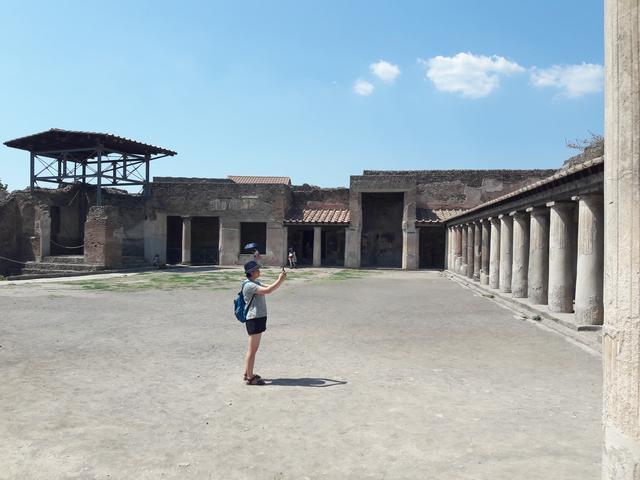Stabian Baths

The Stabian Baths in Pompeii are a fascinating archaeological site that offers a glimpse into the daily lives of ancient Romans. Dating back to the 2nd century BC, these baths are among the oldest and best-preserved in the Roman world. As you enter through the main entrance on via dell'Abbondanza, you are greeted by a large courtyard that sets the stage for the grandeur of the complex. To the left, you will find the swimming pool, a refreshing oasis in the midst of the bustling city. On the right, a colonnade leads to the men's quarters, a series of rooms designed for relaxation and rejuvenation.
The men's quarters are divided into several sections, starting with the apodyterium, or dressing room, where bathers would disrobe before entering the baths. From there, they would move on to the frigidarium, a cold bath, followed by the tepidarium for medium temperature baths, and finally the calidarium for hot baths. The ingenious heating system of the Stabian Baths utilized pipes in the double walls and floors to circulate hot air from ovens and braziers, ensuring a comfortable bathing experience even in the cooler months.
Adjacent to the men's quarters are the women's quarters, which mirror the layout of the men's rooms but on a smaller scale and with less elaborate decorations. The women's entrance, marked with the word "Mulier" (woman), is located in the northwest corner of the courtyard, providing a separate and private space for female bathers. This separation of the sexes was a common practice in the ancient world, reflecting the social norms and customs of the time.
Exploring the Stabian Baths offers a unique opportunity to step back in time and imagine the bustling activity that once filled these ancient walls. From the intricate mosaics that adorned the floors to the intricate frescoes that decorated the ceilings, every detail of the baths speaks to the sophistication and luxury of Roman society. As you wander through the various rooms and chambers, you can almost hear the echoes of laughter and conversation that once filled these hallowed halls.
In conclusion, the Stabian Baths in Pompeii are not just a historical site, but a window into the past that allows us to connect with the daily rituals and routines of ancient Romans. Whether you are a history buff, an architecture enthusiast, or simply a curious traveler, a visit to the Stabian Baths is sure to leave you with a deeper appreciation for the rich cultural heritage of Pompeii and the Roman Empire.
© ChatGPT 3.5